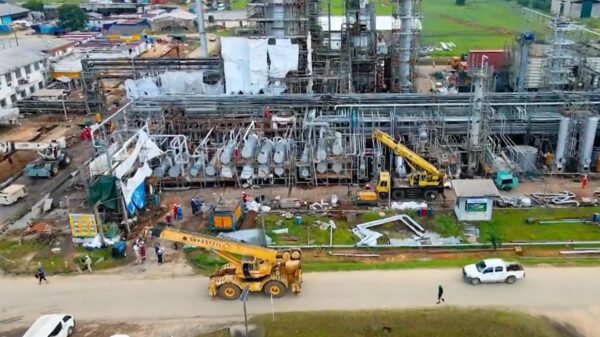Halilu Shaba, director-general, National Space Research and Development Agency (NASRDA), has said that Nigeria’s satellite expired 3 years ago but still functioning by ”grace”.
This is coming after a similar revelation by Space in Africa, that NigeriaSat-1, NigComSat-1, and EduSat-1 – three Nigerian satellites are no longer in orbit.
But speaking in an interview on Channels Television, Shaba, said the satellite expired in 2018 and that Nigeria has only one satellite and that it is not enough to serve the country and is only gibing necessary data based on ‘Grace’
Shaba said the satellite was installed in 2011 and should have been changed because it has a seven-year life span.
“We have only one satellite (built in 2011). It has a seven-year life span and the life span is supposed to have expired in 2018. In our culture of satellite industries, you build a new satellite that is supposed to have replaced that one before you; we have not done that,” Shaba said.
“We are living on grace because normally based on the fuel of the satellite, you imagine that it is going to last for seven years but since 2018, the satellite has been functional and it is still giving us the necessary data.”
Shaba said though having more than one satellites and changing the old one is a priority, the country’s dwindling resources have made it difficult to achieve that.
Only recently, Space in Africa which produces authoritative business and market analysis reports for the African Space and Satellite Industry segments, reported that NigeriaSat-1, NigComSat-1, and EduSat-1 – three Nigerian satellite are no longer in orbit.
Space in Africa reported that only NigComSat-1R, a communications satellite, NigeriaSat-2 and NigeriaSat-X, an Earth observation satellites, are still active.
The report “Replacing Nigerian Satellite Gone Past Design Life; The Journey So Far” authored by Mustapha Iderawumi , said that “Nigeria’s first satellite, NigeriaSat-1, was launched on September 27, 2003, and on August 17, 2011, a replacement, NigeriaSat-2, the most powerful imaging spacecraft ever sent into orbit , was launched.”
The report went on the say that an equivalent satellite, NigeriaSat-X, was co-launched with NigeriaSat-2 at the Yasny military base in Russia
On May 13, 2007, the country’s and Africa’s first communications satellite, NigComsat-1, was launched at an overall cost of USD 300 million. It de-orbited on November 11, 2008, and a replacement, NigComsat-1R, was launched on December 19, 2011.
The cost of both satellites was USD 48.4 million, including launch and insurance. NigeriaSat-1, a satellite built exclusively by the Federal University of Technology Akure, cost the country USD 13 million.
Both NigeriaSat-2 and NigeriaSat-X have a design life of seven years.
In 2014, six years after it has outlived its design life, NigeriaSat-1 was decommissioned by engineers and scientists of the NASRDA, burning up in a controlled re-entry into Earth’s atmosphere.
Nigeria’s EduSat-1 was launched on 3 June 2017. The entire cost of the project, including building and launch, was USD 500,000. EduSat-1 de-orbited on 13 May 2019.
Of Nigeria’s six satellites: NigeriaSat-1, NigComSat-1, and EduSat-1 are no longer in orbit. That leaves three active satellites: NigComSat-1R, a communications satellite, NigeriaSat-2 and NigeriaSat-X, an Earth observation satellites.
The design life of NigeriaSat-2 and NigeriaSat-X ended in 2018, although they are still in orbit and working, but not optimally. The design life of NigComSat-1R will end in 2025.
Nigeria plans for NigeriaSat-3 and NigeriaSAR-1 to replace the two Earth observation satellites, NigeriaSat-2 and NigeriaSat-X, that have outlived their design lives.
![]()


























































